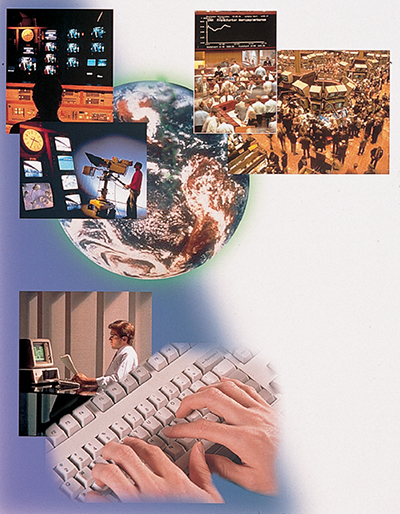Automated Pollution Control
Managing a spacecraft built to probe the planet Saturn and its entourage of moons has resulted in the world's first electronic trading mechanism that helps reduce pollution problems, the Automated Credit Exchange (ACE).
The Jet Propulsion Laboratory's (JPL) Cassini mission to Saturn is outfitted with a dozen different research instruments to orbit the planet and drop a probe onto Saturn's moon, Titan. An early challenge of the project was allocating the spacecraft's resources--funding in several fiscal years, different data transmission rates, mass, and multiple power modes--among the instruments and probe.
To support group decision-making, a system was developed named the Cassini Resource Exchange (CRE). The academic design and testing of the CRE was managed largely by David Porter of the California Institute of Technology (Caltech).
The rationale behind the CRE stems from a need to ration spacecraft resources. For instance, scientists who need more power to operate their instruments may trade mass or computer time with another investigator for the additional power.
Typically, a science instrument manager does not have the information needed to efficiently allocate the various spacecraft resources to all the instrument teams.
Since the information necessary for that evaluation is known only by the instrument team, the teams report their resource requirements to the spacecraft manager. Because teams' reports must be conservative in their initial estimates to protect themselves from unforseen issues, teams have an incentive to request resources that may exceed what their Cassini instrument needs.
Therefore, if the science instrument manager were simply to ask the instrument teams how many resources they needed, the messages received from them would lead to an excess allocation of resources.
To counter this situation, the CRE was created. It removes the need for the science instrument manager to know the individual instruments' requirements for the spacecraft resources. Instead, by utilizing several principles of exchange, the CRE induces the instrument teams to reveal their requirements. In doing so, they arrive at an efficient allocation of spacecraft resources by trading among themselves. In essence, CRE promoted bartered exchange between Cassini instrument teams to arrive at "fair" market prices.
NASA funding permitted the CRE to operate through Caltech's Division of Humanities and Social Sciences. The Cassini CRE resides on the Internet, with every instrument scientist having a trading account. Caltech has licensed the CRE methodology and algorithms for other uses.
Patterned after the CRE, Sholtz & Associates of Pasadena, California established an Internet-based concept that automates the auctioning of "pollution credits" in Southern California. The Automated Credit Exchange, or ACE, was launched in April 1995.
ACE began by trading South Coast Air Quality Management District credits for sulphur oxides and nitrogen oxides. A Southern California based RECLAIM air pollution credit trading market was set up. For every pound of a certain pollutant, producers must have one credit. The credits put a cap on the total amount of pollution that can be legally produced in the area, with that amount becoming more stringent each year through 2003. If a company is effective at reducing emissions, its credits can be sold to others who may not be so successful.
Anne Sholtz, ACE's founder, reports that the pollution reduction strategy is proving successful. "Companies are faced with having to make very important environmental control and capital expenditure decisions involving millions of dollars. As a result, they have to balance the cost of reducing emissions by installing new technology with purchasing pollution credits from other companies that have made additional emission reductions," she says.
"The increased number of companies participating in the ACE market is solid evidence that the RECLAIM concept is working," Sholtz adds.

Utilizing space resource allocation technology, the Automated Credit Exchange system helps companies keep pollution and costs down.













